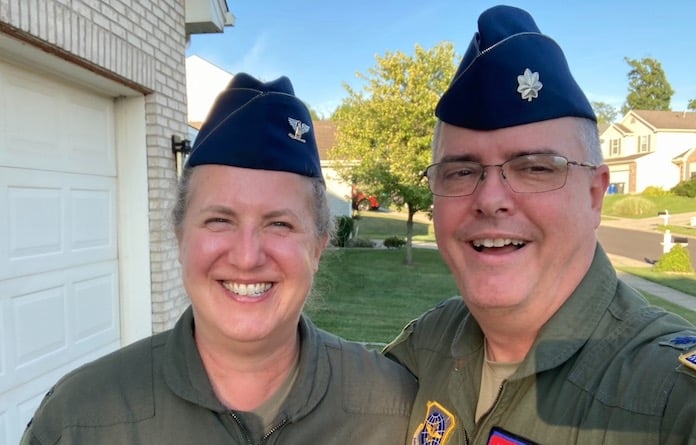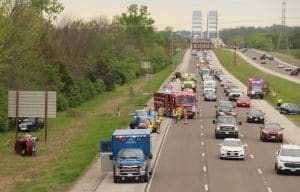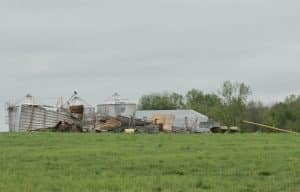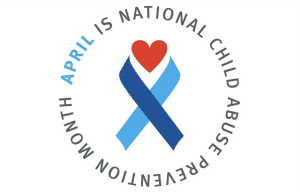Air Force couple serves with pride

With several combined decades of service in the United States Air Force filling a range of medical positions, a Columbia couple will soon be celebrating their retirement as they’re recognized at Hope Christian Church.
Drew and Stacey Aycock have both spent many years in the Air Force, serving as a nurse and surgeon, respectively, along with filling a number of supervisory and other positions during their service.
Drew recalled growing up in Columbia and graduating from Columbia High School. He attended college to study nursing and worked for a time at Barnes-Jewish Hospital in St. Louis, though he soon pursued a change in career trajectory with the military.
“In 1997, I entered the Air Force, I guess to do something different and fly, ultimately,” Drew said. “That’s what everybody enters the Air Force to do. I ended up in the only Level 1 trauma center emergency department that the Department of Defense had at the time.”
Drew’s military career began with the 59th Medical Group at Wilford Hall Medical Center at Lackland Air Force Base in Texas.
He worked emergency services there though he also became a critical care air transport nurse or CCAT, caring for critically injured patients in an airplane.
His next assignment brought him closer to home.
“My next assignment was back here at Scott,” Drew said. “We lived on base, and I came back here to fly. I became a flight nurse. It’s a little different from a critical care air transport nurse. It’s basically an all-around nurse that flies every plane but critical care.”
Drew recalled that his first flight was piloting a C-9 aircraft. He was deployed for three years during Operation Enduring Freedom, Operation Iraqi Freedom, and Operation South Watch on top of flights to Qatar.
In recounting his military career, Drew particularly emphasized his experience during the attack on the World Trade Center on Sept. 11, 2001.
“That actual day, on 9/11, we were called up to take all the C-9s we had at Scott and fly to New York,” Drew said. “We were going up there to support any kind of mass patient movement that was required. At that time, we were the only passenger aircraft in the skies above America. Everything else was fighters.”
Drew further said he wound up at the Pentagon offering support where he was needed. Toward the end of his time responding to the aftermath of 9/11, his was the last plane to bring back remains to Dover Air Force Base in New York.
Summarizing his career, Drew said he spent time with the aforementioned medical group and at transportation command, with his final job being with the Air Mobility Command Global Logistics Hub at Scott as chief of global air medical evacuations.
“The air operation center was the culmination of a pretty good career,” Drew said. “There are theater air operation centers, and then there’s Scott. Scott is the only global air operation center… AMC owns aircraft all over the world. If those aircraft are flying logistics, it is being based out of Scott. It is being controlled out of Scott. If there is a patient that is flying on an AMC aircraft anywhere in the world, my team at Scott are the ones that are manipulating that move.”
Drew’s final rank was lieutenant colonel – he noted he wanted to avoid becoming a full-bird colonel – and he said he has been decorated twice, receiving two air medals for heroism at altitude, saving a life while caring for a patient in a plane. He also received a humanitarian medal from his service responding in Haiti through a 2010 earthquake.
Looking back on his career, Drew had fair memories from each of the positions he filled, though he expressed a particular affinity for the time spent working with and directly caring for wounded.
“Rank evolves an officer,” Drew said. “As you move up in rank, as a nurse, you move from the bedside to a more supervisory role, unfortunately. I stayed at the bedside as long as I possibly could because I enjoyed emergency nursing, I enjoyed flight nursing, I enjoyed critical care nursing, but at some point you get to a rank where they have to move you into a supervisory role because you are, by definition, the expert at that point.”
In strong contrast to Drew’s Columbia roots, Stacey said she’s spent much of her life never living anywhere for more than five years as her father served in the Air Force.
She attended college for two years before deciding to pursue medical school. Though her parents were willing to help her get into medical school, they said she would have to find a way to pay for this education herself.
As she had grown up in an Air Force environment, getting to know the sorts of people her father worked with, Stacey opted to pursue a military scholarship and ultimately received one from the Air Force.
Out of med school, she spent a brief year with a family practice for her residency program before properly joining the Air Force, pushing to become a flight surgeon as opposed to a general medical officer due to the freedom the position gave in being able to travel all over the world.
Stacey traveled to several military bases and filled a range of positions throughout her service.
Among her first stations was Robins Air Force Base in Georgia, where she worked alongside folks who tested recently repaired aircraft to ensure they were still fit for flight.
Her time there presented her with a fairly rare opportunity.
“I actually got about 20 minutes of stick time in a B-1 bomber, which is very unusual for a flight surgeon,” Stacey said.
From there, she found herself furthering her medical education with a specialty in aerospace medicine.
“Aerospace medicine is basically a specialty of flight medicine where you learn leadership and medical standards and occupational medicine as well as population health,” Stacey said.
Later during her service, she served at Vance Air Force Base in Oklahoma as Chief of Aerospace Medicine, acting as the go-to person for questions for medical air crew.
She also did some physiology work in this position, working with quality pilots who suffered from air sickness at times.
Her titled carried over as she moved to Edwards Air Force Base in California.
Stacey later deployed to Afghanistan two times, serving as a flight surgeon and chief trauma surgeon.
It was then at Patrick Air Force Base in Florida that she served as squadron commander and received the rank of full-bird colonel.
Some of her last few years in the Air Force placed her at Scott, where she met Drew as they served in the same unit.
Though Drew still has yet to officially retire from the Air Force and will be doing so later in the year, Stacey actually retired in February.
She spoke to some of the unique aspects of acting as a surgeon in the Air Force.
“It’s also the only career field where the physician literally puts themselves into the hands of their patient, because if I decide somebody can fly, that means I’m willing to get in a plane with them and let them be at the controls of the aircraft, because I’m not a pilot,” Stacey said. “I can’t fly the plane by myself… Most of the time you go on your clinical training and your experience, but there are times where it’s just gut. You’re not comfortable with somebody flying, then you’ve gotta ground them until you figure out how to get them healthy enough to safely fly again.”
Both her and Drew additionally described the aspect of their job that kept them passionate about their work.
Stacey felt drawn to the passion and drive she saw in the people she cared for. She noted how a number of pilots sometimes refused to take prescribed muscle relaxants as they were so desperate to continue their work and fly again.
“What kept me in flight medicine is that I really enjoyed working with people that… you almost had to hold them back when you were trying to treat them because they wanted to get back to work so much,” Stacey said. “They loved their job so much that they didn’t want to be sick.”
Drew, again speaking to his deep interest in working directly with patients, described the kinship he felt as he took care of folks who were in much the same position as him.
“When you go to combat, the people you’re caring for are dressed exactly the same as you are,” Drew said. “You’re caring for people who signed up for exactly the same reason as you did, and it’s different from walking into a civilian ER and taking care of somebody you have no affiliation to… It’s different when you look down at a patient who’s wearing the exact same uniform you are, is probably about as young as you are… It just meant a lot more to be the people that would help your brothers and sisters.”
As the military couple looks forward to their proper retirement, they expressed similar hopes of being able to avoid the many stressors and hardships of medical work.
“I guess my main goal is being able to do what I want when I want to do it and not having so many obligations that I’ve gotta constantly focus on something that somebody else is scheduling for me,” Stacey said.






